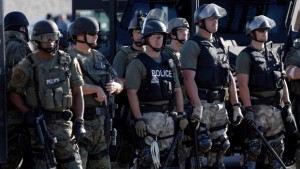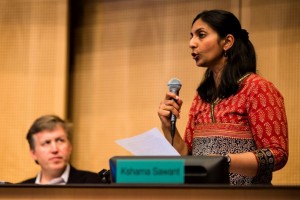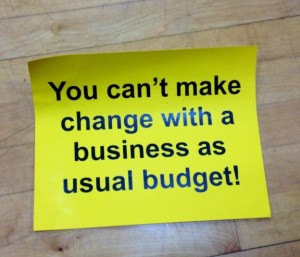In Dec 2014, Mayor Slay and Chief Dotson announced an $8 million proposal to increase the St. Louis Police Department by 160 new officers in 2 years mostly through increased ticket and fee revenue. Mayor Slay has attempted to justify this plan by citing an alleged jump in crime in the city since August but as the recent police murders of Michael Brown and Eric Garner shows, police presence can literally get you killed. We oppose any increase in police powers and numbers as this only guarantees increased targeting of the poor and people of color.
Chief Dotson cites an alleged “Ferguson Effect” to explain a supposed increase in homicides from August 2013 to August 2014. Looking at the actual crime statistics he used and those cited by the Post Dispatch, the major increase was in the Spring of 2014, months before the Ferguson Protests began. As well, the December 31 Post Dispatch article titled “St. Louis homicides up more than 30 percent in 2014 to highest total since 2008,” shows no increase in homicides in St. Louis County for the entire year of 2014 over 2013. If Chief Dotson is attempting to blame the Ferguson Protests for a spike in homicides, shouldn’t there have been an increase in St. Louis County where the actual protests first occurred? This shows how politicians and police officials like Chief Dotson will use fear and manipulate statistics to justify increases in their own power and demonize communities challenging police brutality.
After months of protests, politicians like Democratic Mayor Slay have been forced to propose band-aid reforms like police cameras. Meanwhile they continue criminalizing large sections of black youth, and the poor.
The solutions to urban crime are, in fact, well known, and some solutions like a youth jobs program have actually been studied and proven effective. Mayor Slay and Chief Dotson could have used the murder of Michael Brown and the national and international focus on police violence and systemic racism as an opportunity for St. Louis become a model city that attempted to tackle the greatest risks to peoples survival and the root causes of crime. They could have proposed initiatives to confront high rates of unemployment, worsening poverty in the city, lack of access to health care, adequate housing and education.
For example, the Kerner Commission, assembled by President Johnson in 1968 after three years of riots to investigate the cases of strife in communities of color, proposed systematic solutions to confront racially-segregated communities, inferior schools, high unemployment, and racist police violence. Our politicians today ignore systemic approaches like those proposed in the 1960s, yet wonder why their programs fail to seriously tackle crime and only lead to the indignation of communities of color. We, like the rest of the #BlackLivesMatter movement demand nothing less than fundamental change.
More police, more problems

Due to the racist and unequal nature of St. Louis City and US society, any additional police officers will continue to target the most marginalized in the city: the poor, people of color, and those with disabilities. Racism, in fact, dictates who gets arrested, stopped and the length of their prison terms. In St. Louis County for example, 40 percent or more of their annual revenue comes from the petty fines and fees collected by their municipal courts. The people who are going to be forced to foot the $8 million bill in St. Louis City will literally be the exact same people already most targeted by the police.
Instead of making communities safer, increased law enforcement devastates communities. We live in the country that imprisons more people than any other society that has existed. The FBI reports that in 2011, cops in America killed 404 suspects in acts of ‘justifiable homicide’. Today, police kill black Americans at nearly the same rate as the lynching during the Jim Crow era and young black men are 21 times more likely to be shot dead by police than white men. This is why, as a recent New York Times editorial points out, the police “are justifiably seen as an alien, occupying force that is synonymous with state-sponsored abuse.”
Increased state repression in the U.S. is directly connected to the fact that we live in one of the most economically and racially unequal societies in human history. St. Louis ranks among the nation’s top metropolitan counties with the highest poverty rates. Nationally, the average white family had six times the total assets – house, cars, savings, and retirement – as black and Latino families as of 2010. Women make 77 cents to every white man’s dollar and for African-American women, they earn 64 cents and Latina women earning 56 cents for every dollar earned by a white man. Increasing the minimum wage to $15 an hour is urgently needed to address poverty.
A city budget is the clearest statement of the politics and priorities of the government. The proposal to spend $8 million on cops can only be seen as a reinforcement of the status quo, with all the predicatable, devastating outcomes for commuities of color. Instead of hiring more officers, we demand that the $8 million proposed be the first among many investments for jobs programs, and increased investments in health care and affordable housing.
Furthermore, the facts outlined above clearly demonstrate the need for an independent, democratically elected, and fully funded, civilian body with full powers over the police as a step towards community control of the public safety. If this body also has the power to set budget priorities, this would allow St. Louisans to mobilize to demand programs that ordinary people actually need.
Please sign our petition opposing the hiring of 160 new officers.
Socialist in Seattle
Clearly, a completely different approach to the question of crime, poverty, and policing is necessary. In Seattle, Socialist Alternative City Councilmember Kshama Sawant was elected in 2013 and used her position to build and lead a movement of low wage workers and activists for a $15 minimum wage that was passed just six months after she took office.

Councilmember Sawant then initiated a People’s Budget Hearing that put forward budget proposals based on the needs of the people and a bottom-up discussion with community leaders, unions, and social justice organizations. Through this process she was able to win $1.6 million for city workers and critical funding for homeless shelters and encampments.
This shining example in Seattle gives a glimpse of what is possible for St. Louis and other cities when working people elect their own representatives, who take no corporate money and use their positions not build their own careers, but to activate ordinary people to fight for what their communities need. Imagine what more could be won if more left-wing candidates independent of the Democratic Party were elected to office across the country. This could be the step towards building real representation for working families, a political party for the 99%.



